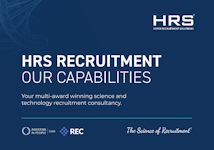Why Are Science Cover Letters Important?
With so many job applications for hiring managers to get through, a great cover letter can help you stand out from the crowd.
Submitting a cover letter for a science role is particularly useful, as your CV will likely be a long list of scientific terminology and qualifications. This can make it harder for you to convey your enthusiasm and individuality. Fortunately, you can use your cover letter as an opportunity to get your personality across a bit more, as well as flesh out some of the claims you make on your CV.
READ MORE: CV Advice & Tips
How to Get Started
Before you start writing, it’s a good idea to come up with a list of the key points you want to argue. You can use the job description to help you determine what scientific skills and attributes are most worth mentioning.
You’ll want to make these points very clear in your writing - you don’t want the hiring manager to have to dig to uncover the information.
Hiring managers will have to sift through hundreds of cover letters, so the easier you make it for them to pick out the key points, the better.
Science Cover Letter Structure
Here’s a simple example of how to structure a science cover letter:
Introduction
Briefly introduce yourself and clearly state which role you would like to be considered for. It’s a good idea to write the exact job title and include any reference numbers to avoid any confusion. Explain why you think you would be a good fit for the role in a sentence or two. You can expand on this later on.
Main body
Outline any key skills and qualifications that make you suited to the role, pulling examples from your previous experience to back up your claims. Make sure you keep referring to the job description when writing this section. Depending on the science role, you might want to reference any lab experience you have or additional qualifications that make you well-suited to the job.
You could also talk about why you’re interested in joining that particular company and go on to demonstrate how you would fit in within the team.
Conclusion
Take a few sentences to reiterate the key points and then thank the reader for their time and consideration. Let them know you’re looking forward to hearing from them, then sign your name. You could also include your contact information here or direct the reader to your CV for more information.
Science Cover Letter Tips
Here are some additional tips to help you make your cover letter as persuasive as possible when applying for science jobs:
- Address the hiring manager by name if possible. Show them you haven’t just sent off a generic cover letter. Finding out the hiring manager’s name is a simple way to be more direct.
- Always provide examples to back up any claims. Anyone can regurgitate the job description back to the hiring manager. They’re going to be looking for real-life proof of your capabilities.
- Research the company thoroughly beforehand. This shows the reader that you have taken the time to learn about the business demonstrates your enthusiasm.
- Proofread carefully. This might sound obvious, but submitting a cover letter full of silly mistakes won’t look good. As a scientist, you need to be analytical and detail oriented. Start by meticulously ensuring that your cover letter is in tip-top shape before sending it off.
